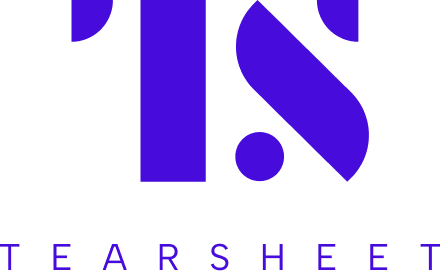U.S. Bank deepens focus on CX through its recent embedded payments suite expansion
- U.S. Bank has recently expanded its embedded payments suite in response to growing demand for more integrated solutions.
- By making this move, the bank is emphasizing the importance of embedded payments in creating a smoother user experience, a key driver behind its latest expansion.

Not long ago, businesses had to piece together payment systems from a patchwork of providers: one platform for onboarding customers, another for transferring funds, and yet another for tracking and reporting. It worked, but for companies trying to scale or offer smooth digital experiences, this ball of string has been a constant friction point.
This fractured approach further underscores how crucial timely, accurate payments are to delivering a strong user experience. Resolving this challenge is a central objective behind U.S. Bank’s recent embedded payments suite expansion.
Designed to operate behind the scenes — within websites, mobile apps, enterprise software, or fintech platforms — the new features of the embedded payments suite help businesses deliver a simplified payment experience without redirecting users to external sites or relying on multiple vendors. Whether it’s paying suppliers, disbursing funds to users, or employee transactions, the system is built to plug right into what companies are already using.
The new features in the expanded embedded payments suite
What’s new in the embedded payments suite is the breadth and depth of capabilities the bank is now offering across a wider range of use cases and client types.
“The expanded suite represents a significant leap forward in both scope and technology,” says Mike Jorgensen, head of emerging solutions and embedded payments at U.S. Bank.

This expansion introduces a more comprehensive, flexible, and scalable infrastructure designed to meet the evolving needs of fintechs, corporates, and mid-sized businesses.
“This builds on the bank’s deep embedded payments experience. This is an area where we’ve focused on for years through our merchant acquiring business, Elavon,” adds Jorgensen.
A key enhancement is the upgraded “for-benefit-of” (FBO) account model. For platforms that need to move money on behalf of their users — think marketplaces, gig platforms, or financial services apps — this structure makes it easier to manage and track funds. Each user or transaction can be tied to a specific virtual account, giving businesses clear oversight without the overhead of managing individual accounts manually.
“We know this is important to our fintech and payment service provider clients,” notes Jorgensen.
U.S. Bank’s FBO account structure is pre-configured to support unlimited virtual accounts, enabling clients to track and reconcile funds at the participant level without needing to build complex systems from scratch.
The expanded suite also includes:
- Direct customer integration via an intuitive developer portal that provides API documentation to streamline onboarding.
- Support for all major payment rails, including ACH, Wire, Check, RTP, FedNow, and Push to Card, enabling clients to offer a wide range of disbursement options tailored to their users’ preferences.
- 24/7 support model featuring a dedicated embedded solutions customer support team.
- A Connected Partnership Network, which allows clients to embed payments through third-party platforms they already use, such as ERPs or EHRs.
“Ultimately, our goal is to meet clients where they are, whether they’re integrating payments into a proprietary app, a third-party ERP, or a vertical-specific platform, and make that process as efficient and secure as possible,” notes Jorgensen.
The technical backbone
Two critical layers of tech are doing the heavy lifting behind the expanded embedded payments suite:
i) The expanded embedded payments suite is built with a flexible architecture and infrastructure to support diverse platforms and cater to the needs of clients ranging from large corporations to midsize businesses and fintech startups.
“U.S. Bank has enhanced its core infrastructure to better support where it plans to be in many years to come,” says Jorgensen.
That includes modernizing legacy systems to be nimble and easy to modify as new capabilities come to life. This work, according to Jorgensen, has helped make the embedded payment capabilities, like the FBO solution, and cloud-based merchant acquiring solutions through Elavon possible.
Wyndham is among the recent clients using the bank’s Elavon Cloud Payment Interface (CPI) across its hotel franchise to enhance the guest experience, such as for mobile check-in.
ii) At the center of the embedded payments suite is the bank’s developer portal, which provides clear, well-structured API documentation and integration guides. Clients can quickly connect to the bank’s platform to initiate payments, manage accounts, and access real-time reporting. The APIs are designed in a way that clients can implement only the components they need, whether that’s payment initiation, account validation, or transaction reporting.
The task of refining and aligning the strategy: The embedded payments transformation required significant effort by U.S. Bank and involved a shift in how the bank views payments, moving from a back-office utility to a customer experience differentiator, explains Jorgensen.
“This isn’t just about technology: it’s about aligning product, sales, compliance, and client experience into a unified strategy,” he notes.
To create a unified strategy, the bank brings together:
- Account architecture: Designing a flexible FBO and virtual account structure that supports real-time fund tracking and reconciliation.
- Use case prioritization: Identifying verticals like insurance, healthcare, and EWA where embedded payments can deliver the most impact today.
- 24/7 support: Creating a structure where the bank can provide support at any time.
Real-world use cases: Jorgensen shares three examples showing how companies have successfully integrated U.S. Bank’s embedded payments and how the added capabilities have enhanced their operations and customer experience:
- One Inc., a platform serving property and casualty insurance carriers, integrates with U.S. Bank via API to simplify premium payments and claims disbursements. Its use of the bank’s FBO model allows for money movement on behalf of policyholders while leveraging the bank’s account validation, fraud controls, and real-time payment capabilities.
- Rain, an earned wage access (EWA) provider, uses the bank’s direct integration model to provide real-time payments to employees. By embedding the bank’s APIs into its own platform, the firm has been able to scale disbursements while maintaining compliance and delivering a smoother user experience.
- Modern Treasury is part of the U.S. Bank Connected Partnership Network. Through this partnership, clients can access U.S. Bank’s payment capabilities, including ACH, wires, RTP, and FedNow, directly within Modern Treasury’s platform. This allows businesses to embed and automate complex payment workflows without building custom integrations. The result is faster implementation, improved operational efficiency, and streamlined reconciliation.
Embedded payments: the bridge to end-to-end financial ecosystems
Looking ahead, Jorgensen believes embedded payments are a gateway to a broader shift toward fully integrated financial experiences, such as embedded lending and FX within enterprise platforms.
“Absolutely!” he emphasizes, explaining that embedded payments are the foundation for embedding many more U.S. Bank capabilities in the future.
“Our vision is to offer embedded experiences that make life easier and simpler for our clients,” Jorgensen notes. “We are creating a fully integrated experience where businesses can manage things like liquidity and disbursements in real time, without switching systems.”
“This shift is about more than convenience; it’s about enabling finance leaders to move faster and reduce friction.”
[Sidebar]: How upgrading core tech can bring banks and businesses closer
The evolving needs of small and medium-sized businesses (SMBs) are creating both challenges and opportunities for financial institutions (FIs).
In a talk at Tearsheet’s The Big Bank Theory Conference last year, Scott Beyer, U.S. Bank’s Head of Business Banking Digital Experiences, highlighted how banks can address SMBs’ pain points by embracing technology. With 77% of SMB owners now adopting or planning to adopt digital tools to streamline their operations, financial institutions are in a strong position to offer solutions that reduce administrative burdens and allow business owners to focus on growth.
Beyer outlined a three-step strategy for banks to follow: ensuring the availability of products and services, building internal and external system integrations, and improving data reconciliation and harmonization.
The first step involves making digital banking products accessible, such as enabling online account openings. While many banks have begun to roll out such services, the user experience still varies widely. Beyer stressed that without upgrading legacy systems, even the best-designed interfaces won’t deliver smooth, integrated digital experiences.
“If all we [banks] are doing is investing in the experience layer but the foundational technology is archaic mainframe platforms or databases, we’re really going to have a hard time creating integrated experiences,” said Beyers.
The second step emphasizes the need for deep integrations, both within the bank’s own systems and with external partners. Internally, integrations can streamline user experiences across platforms, eliminating multiple logins and enabling easy transfers or payments. Externally, partnerships with third-party providers, such as payroll or analytics platforms, can add real value. However, demonstrating the business impact of these partnerships remains a challenge, especially when compared to more visible benefits like increased account signups.
“This transition introduces increasing complexity and becomes less sexy for CFOs,” noted Beyer.
The third and most difficult step, according to Beyer, involves breaking down data silos. Banks often manage fragmented data across various systems, which hinders efforts to create unified user experiences or implement one-click functionality. Harmonizing this data is essential, but investment in foundational technology can be hard to justify to stakeholders, particularly when returns are less immediately visible.
“Transforming the enterprise to accommodate such changes is a significant hurdle for business banking leaders trying to make a compelling case for these investments,” said Beyer.
This gap has allowed the more agile and vertically integrated fintechs to capture niche segments of the market by offering more tailored and efficient solutions.
Despite this competition, banks still hold a competitive edge in customer trust and the ability to offer a comprehensive suite of services. A majority of SMBs prefer managing all their financial needs through a single, integrated platform. To meet this demand, banks need to shift focus from superficial upgrades to core infrastructure improvements.
As Beyer noted, committing to foundational investment will be crucial for banks to build a connected ecosystem that empowers SMBs and keeps traditional institutions relevant in an increasingly digital financial landscape.


